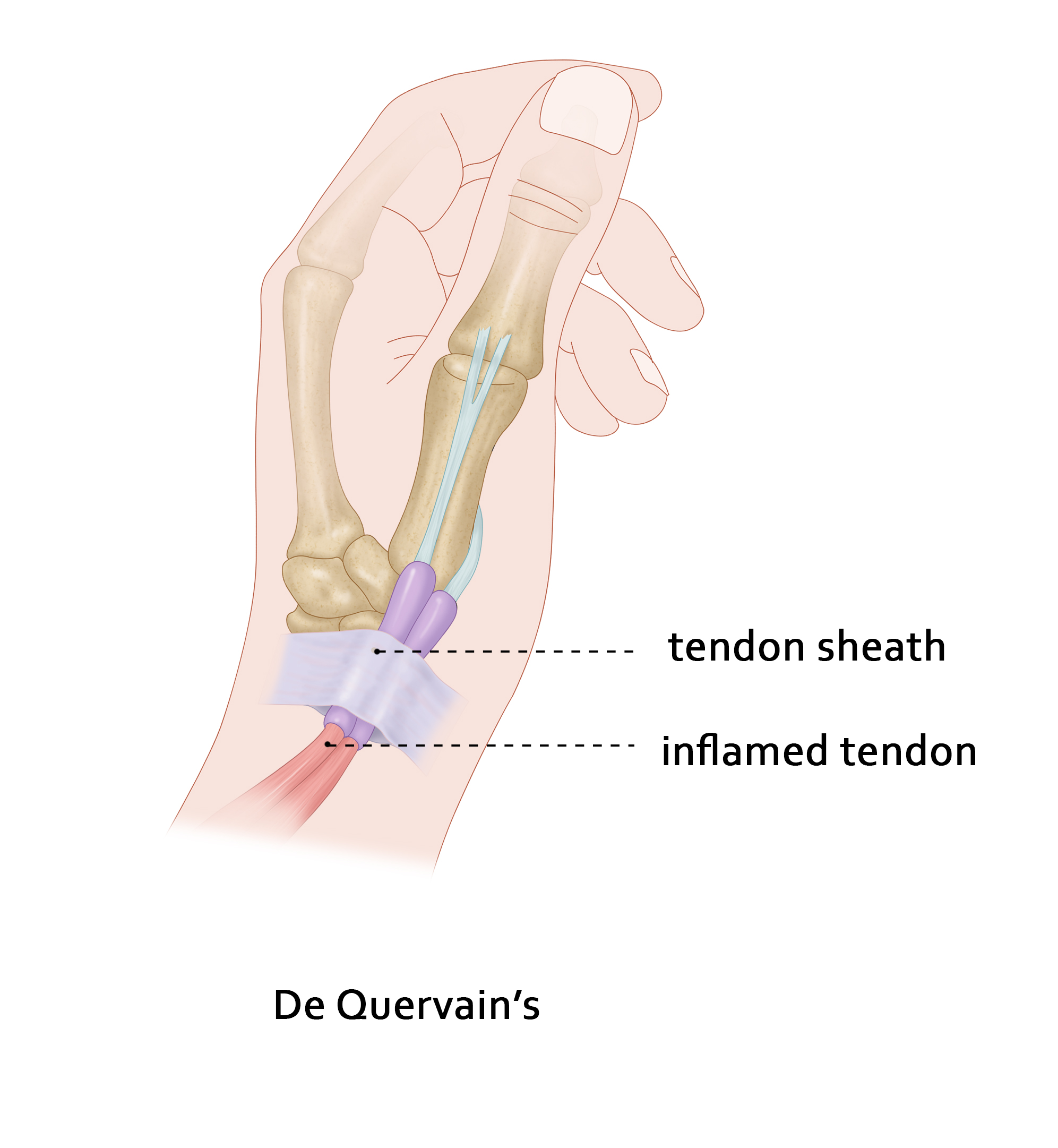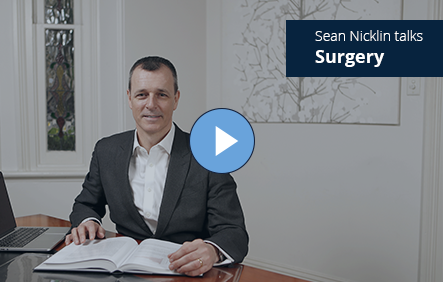De Quervain’s Tendonitis
About De Quervain’s Tendonitis
De Quervain’s tendonitis is the medical term for pain arising on movement of the thumb and wrist due to irritation of the tendons at the base of the thumb. Common painful movements include making a fist and grasping or holding objects.
The main symptom is pain over the thumb-side of the wrist which may come on gradually or suddenly and may radiate down the thumb or up the forearm.
There may be increased pain with hand and thumb motion, leading to difficulty with pinch activities.
Other symptoms include swelling at the site of pain, ‘clicking’ or ‘snapping’ and numbness on the back of the thumb and index finger.
The cause of the irritation of the tendons is usually repetitive activity.
New mothers are prone due to the hand positioning associated with caring for an infant, and the hormonal fluctuations of pregnancy and nursing.
Other causes include wrist fractures, diabetes and some types of inflammatory arthritis.

Non-surgical treatment
In some cases, simply stopping the aggravating activities may relieve symptoms. If this does not occur we usually recommend the following non-surgical treatment options prior to considering surgery:
- wearing a splint to rest the thumb and wrist
- oral anti-inflammatory medication
- cortisone injections around the tendons
These treatments can help reduce the swelling, which can relieve pain over time.
If symptoms continue and are severe, surgery is usually then recommended.
Surgery
Surgery involves releasing the tight fibrous tissue around the irritated tendons giving them more room to eliminate the pain and prevent irritation from recurring.
FAQs
How long is recovery post-surgery?
Surgery is usually performed as day surgery and normal use of the hand can usually be resumed within a few weeks.
There is some pain during the recovery period. No splint is required.
Should I do anything in particular post De Quervain’s surgery?
Rest and elevation of the hand is important and will also help reduce discomfort. If fitted with a sling, take your arm out of the sling hourly to exercise your shoulder and elbow so they do not become stiff.
If your fingers and thumb are not in the splint, they should be moved regularly as well. At night sleep with your arm propped up on pillows next to you.
Medical terms
De Quervain’s tendonitis/disease: Inflammation of tendons that often causes pain in the thumb side of the wrist
Fees
Our Surgeons & Anaesthetists charge out-of-pocket fees for surgery done in the private hospital.
Because the length and complexity of the different surgical techniques are so vast, you will be given an estimate of costings after your consultation.
For more information on fees and rebates please visit the fee section on the FAQ page.

